Sharara vs Gharara: How To Choose The Perfect Style for You?
If you don’t wear ethnic outfits often, you might mistake a sharara for a gharara. Yet, these glamorous garments in indian dress have distinct features the royal families take pride in owning even today.
The popularity of the sharara and gharara suits dates back to the Mughal era. The popular assumption is that these styles were first introduced in Lucknow, earlier known as Awadh. 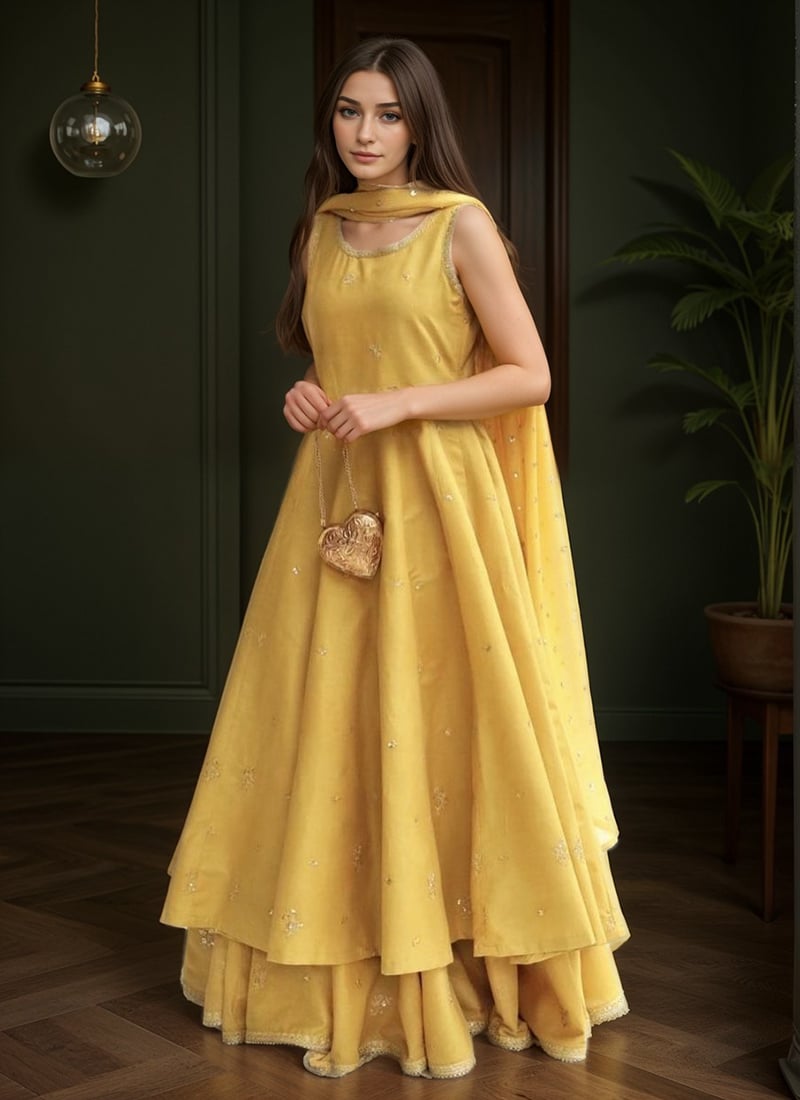
During the 1970s and 80s, their popularity surged due to their frequent appearances in Bollywood, and it has been evergreen from that period.
These ethnic flared pants are eye-catching, comfortable, and flexible when it comes to styling. Adorning a sharara or gharara to festive events is sure to turn heads, and there’s no doubt about it. But, even then, how do you choose between sharara vs gharara? Let’s find out. 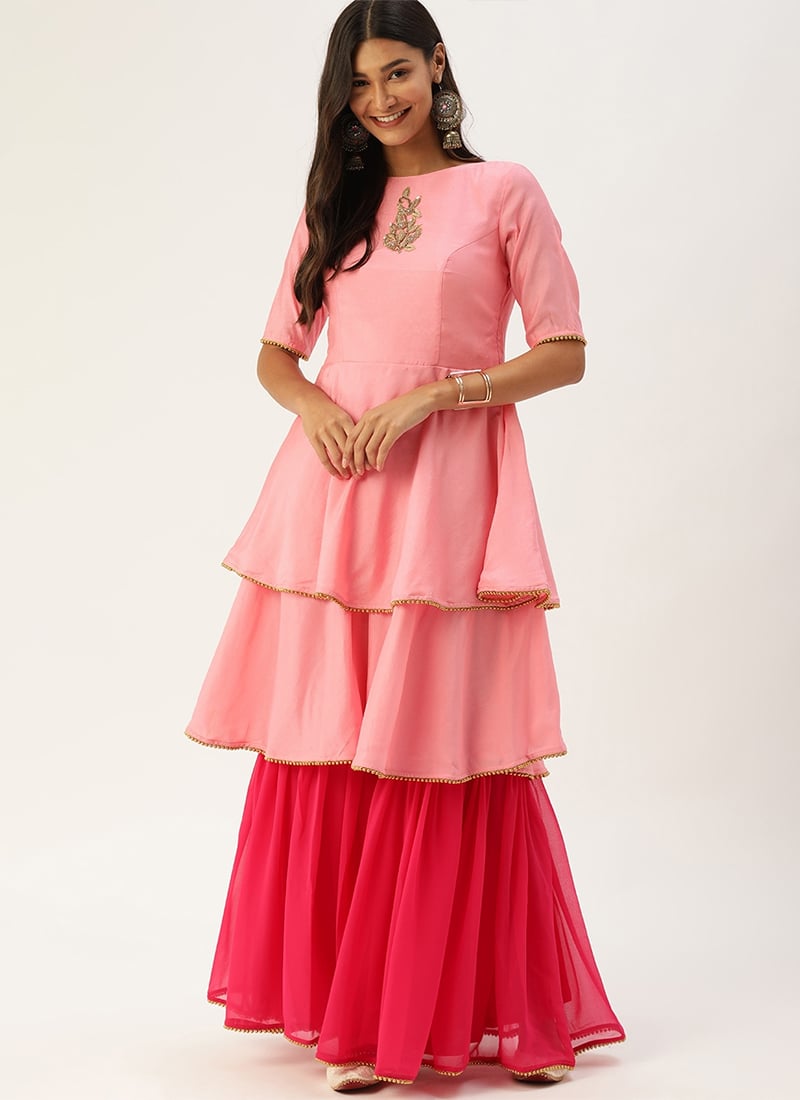
Introduction- Key difference between Sharara and Gharara
Are there rules for the events where you can wear a sharara too? Is there a cultural or regional difference? Can you wear a gharara to someone’s grand birthday party? You’ll know once you understand both garment types.
What is a Sharara?
It’s not uncommon to mistake a sharara for a lehenga skirt. Just as it’s equally possible to confuse yourself between a gharara and a sharara. 
Because the shape of a sharara makes it look like a flowy skirt. But a sharara is a pair of traditional flared pants. Save for the fitting around the waist, they’re completely loose and wide-legged. In this sense, the comfort of moving around in a sharara is similar to a palazzo. The flare covers a wide range of styles, from paneled and circular to A-line. Shararas also have the reputation of being party pants. It’s the go-to for any kind of traditional event for many South Asian women. 
Key Features of a Sharara
These happen to be the ultimate, all-events festive wear.
- They are lightweight, flowy, and a dream to walk around in summer.
- Usually made of soft fabrics like georgette, chiffon, or cotton.
- Organza, silk, and velvet shararas are also popular choices for special occasions.
- The pants can be plain from top to bottom or have embroidery all over.
- Sharara decoration tends to be a mix of sequins, lace, and gota lace. Actually, sequins are the most common.
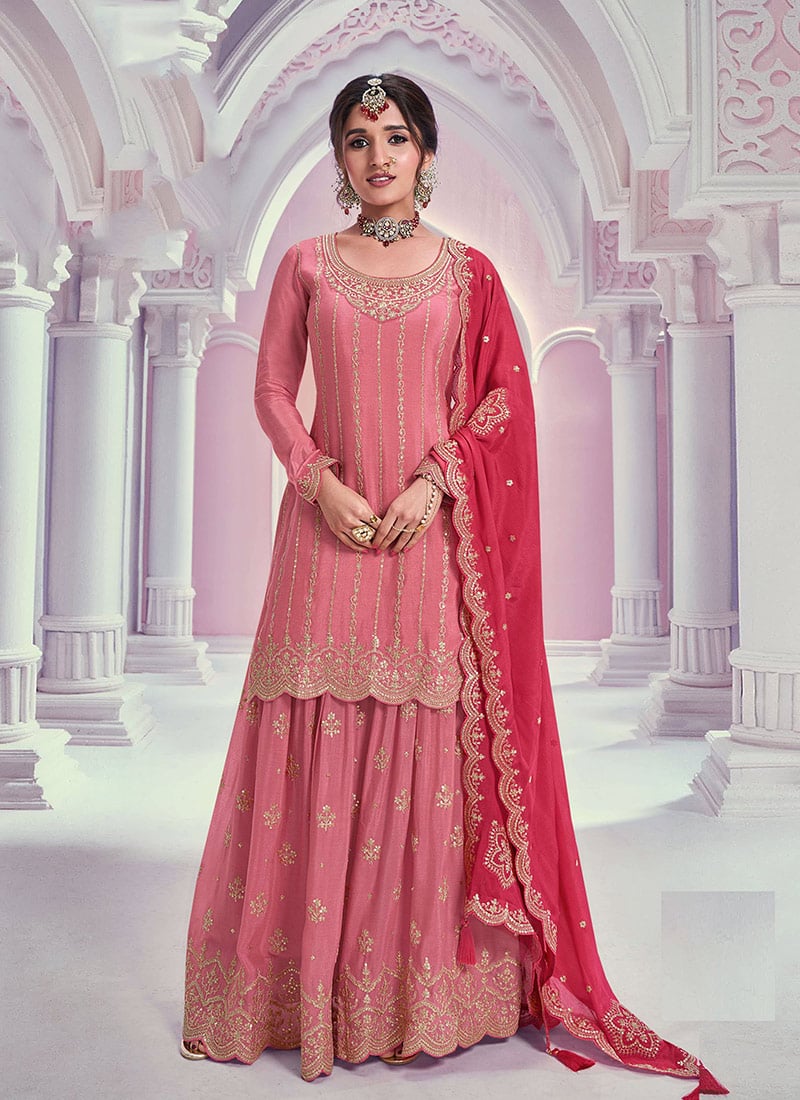
Who Should Wear a Sharara?
Its high versatility makes it a great choice for women of all shapes and sizes. You can choose the depth of the flare, which has the ability to make short women look taller and petite women more shapely.
What is a Gharara?
Ghararas don’t look unlike shararas. But one feature always gives it away. They are fitted from the waist to the knees. Right above the knees, there is a thick band, usually in a contrasting color made of gota lace to make their existence known. From there, the fabric is gathered to flow down into a flare to the toes. Ghararas are for more formal events. It’s the choice for weddings and receptions. 
Key Features of a Gharara
A big difference between sharara and gharara is the restriction of movements.
Ghararas are heavy. It’s recommended to wear them more during winter or in AC environments so the pants don’t make you sweat.
- They are plain from the waist to the knees.
- All the designs start from the knee down.
- A lot of modern ghararas don’t have designs below the knee either.
- They use satin or brocade for ghararas.
- The embroidery usually has zari, sequins, stones, and beads.

Who Should Wear a Gharara?
When it comes to sharara vs gharara, this is where shararas are one point ahead. Similar to shararas, women of all body types can wear ghararas. Except, if they have particularly short legs. Ghararas bunch up at the knees. Due to the thick band, the exact area from where your knees start is really obvious. This kind of styling can make you look shorter. Otherwise, ghararas suit everyone, especially tall women.
Sharara vs Gharara vs Palazzo – What’s the Difference?
It’s way easier to make a clear distinction between palazzo pants and sharara than a gharara and sharara. 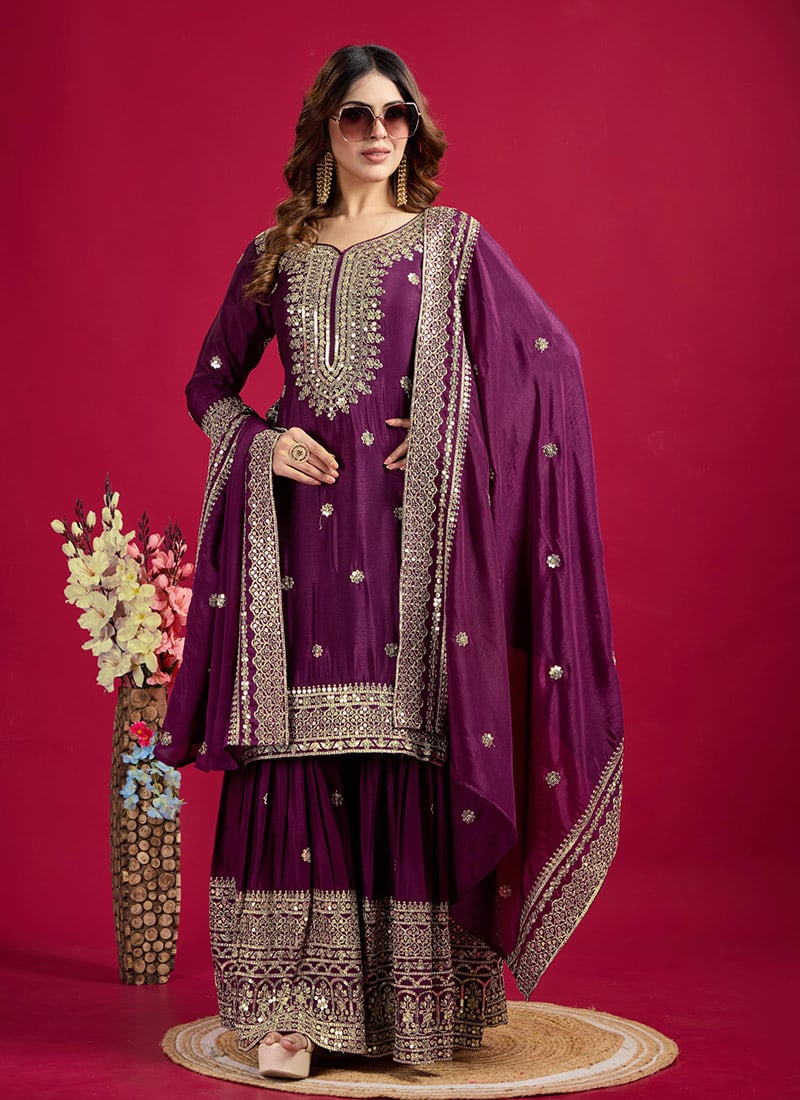
How Do Palazzo Pants Differ from Sharara & Gharara?
Palazzo pants are loose-fitted trousers free-flowing from the waist to the ankle. In this sense, they’re similar to sharara. But the flare in sharara is way more dramatic. Palazzo pants are also made of lighter materials, such as cotton or rayon. Compared to sharara vs gharara, palazzo pants have little to no decorations. There are little to no sequins, zari, or stones to give the ethnic aesthetic.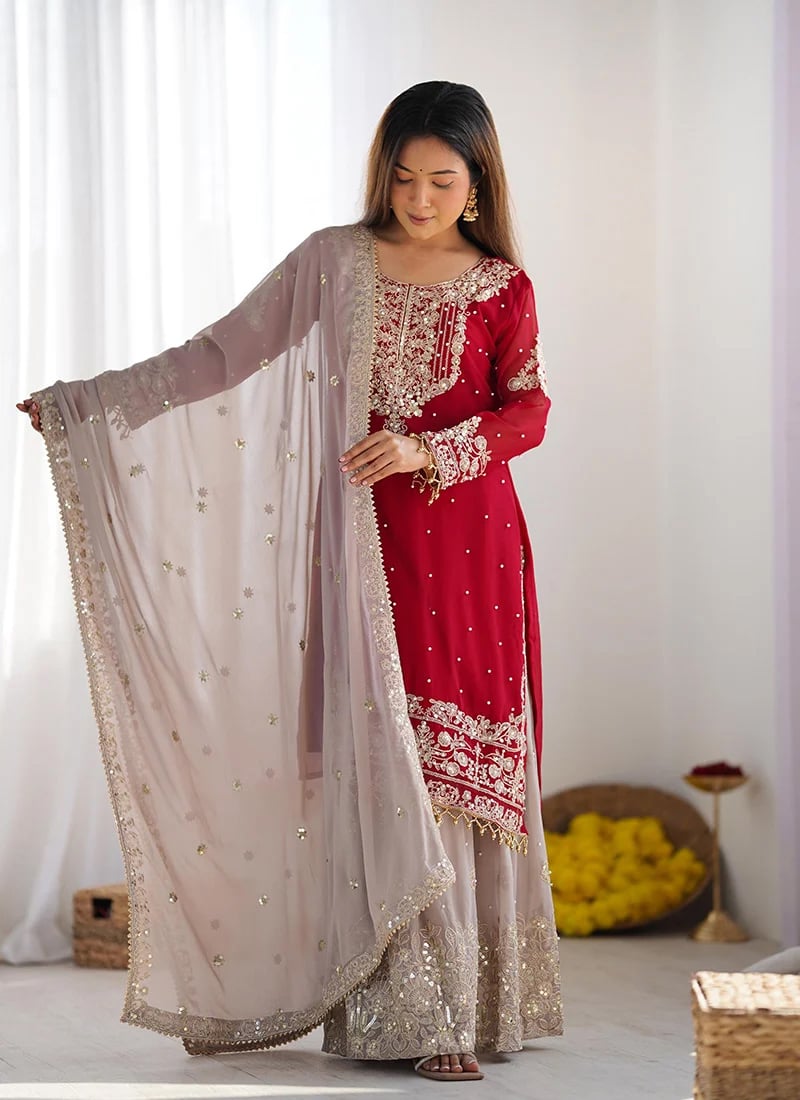
When to Choose Palazzo, Sharara, or Gharara?
While palazzo pants are versatile, they don’t count as wedding or festival attire. You can wear palazzo pants daily, while you hop on to the gym or go to your college. Semi-formal events like someone’s birthday or a college function are also good places to wear palazzo pants.
Now, for gharara and sharara, you can wear the sharara for festive events like Eid, Diwali, or any kind of puja. They give you enough ease of movement without making you feel underdressed. You can also wear them to a wedding. But ghararas suit the occasion more. They have a regal, structured look to match the formal feeling of wedding and reception. Gharara is actually a popular choice even for the bride to wear.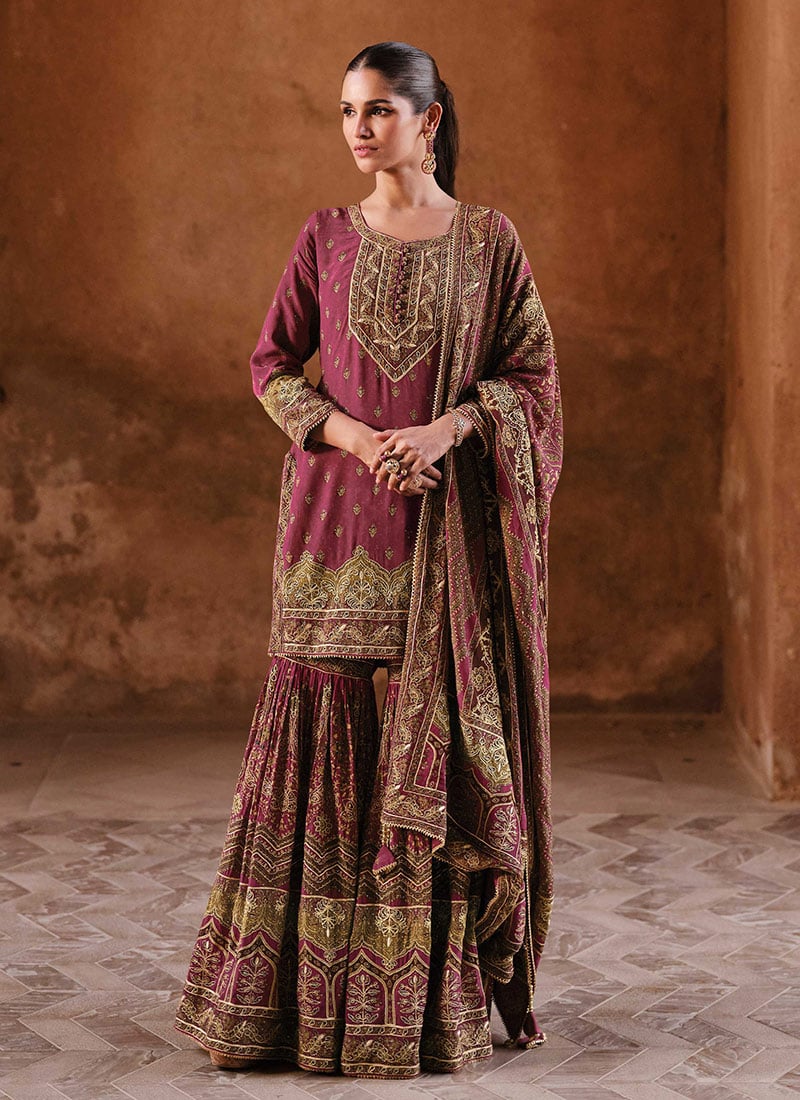
How to Choose Between Gharara and Sharara?
If the difference between sharara and gharara has made both equally appealing, here’s how you can choose:
Consider Your Body Type
If you’re a petite woman with short legs, go for the sharara. Unless you style your gharara properly, like selecting one with a low flare and pairing it with a blouse or crop top, ghararas would make you look shorter. 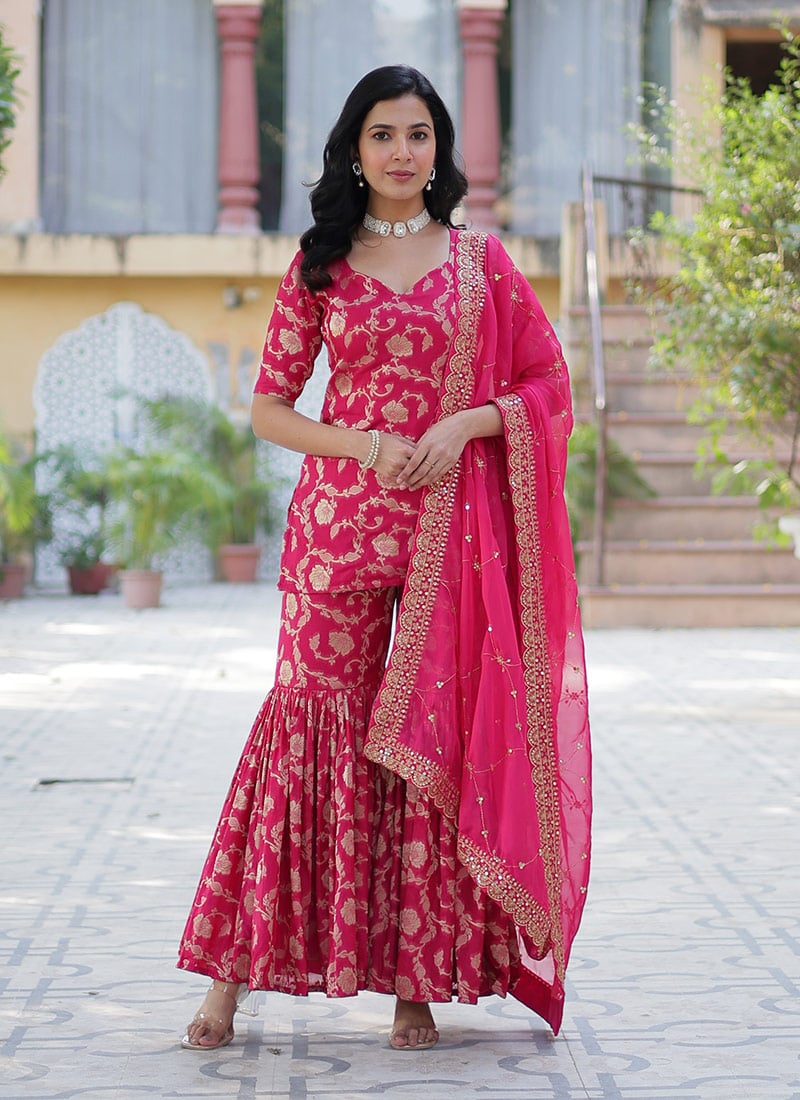
Even for your sharara, pair it with a crop top or a short kurti. If you’re tall, both shararas and ghararas suits will naturally fit your body type. Go for the ones with maximum flare and pair them with a long kurti or jacket — preferably calf-length.
For curvy body types, you want to go for gharara and sharara with medium flare. They help define your shape, especially when you match them with a short kurti and dupatta.
How to Style Sharara vs Gharara for Different Occasions?
Traditionally, shararas suits have a combination of thigh-length kurta, dupatta, and maximum flare for the sharara. This is perfect if you are going to a wedding.
For Diwali or similar occasions, you can go for a more modern twist — a sharara with a choti and a jacket and dupatta. 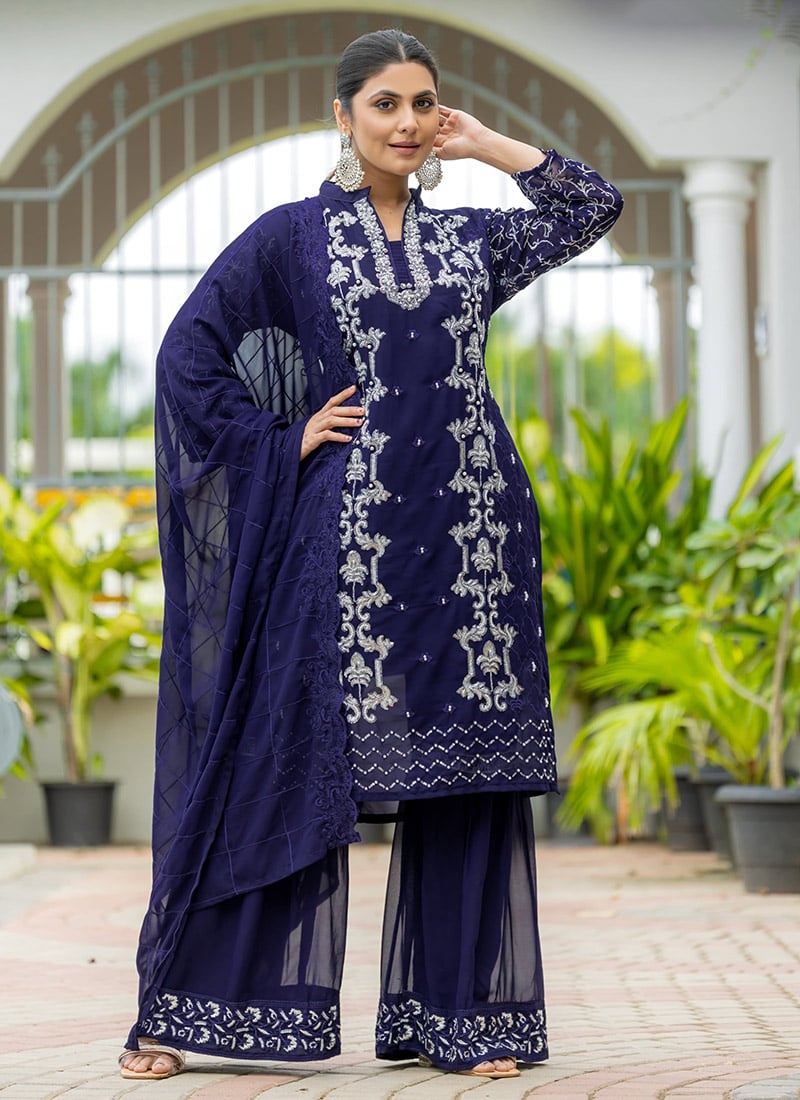
Modern ghararas can also fit festivals. Replace the traditional kurta with a crop top and make sure the gharana has a more restrained flare.
Meanwhile, the wedding gharana should have a kurta that just ends before the knee. From there, the flare of the gharana starts. Match the heavy embellishments of the gharara with equally grand jewelry and dupatta.
Sharara vs Gharara: Which One is Right for You?
The thing about sharara vs gharara is that both can be right for you, depending on the occasion, embroidery, and flare. The more you customize them, the better they suit you. 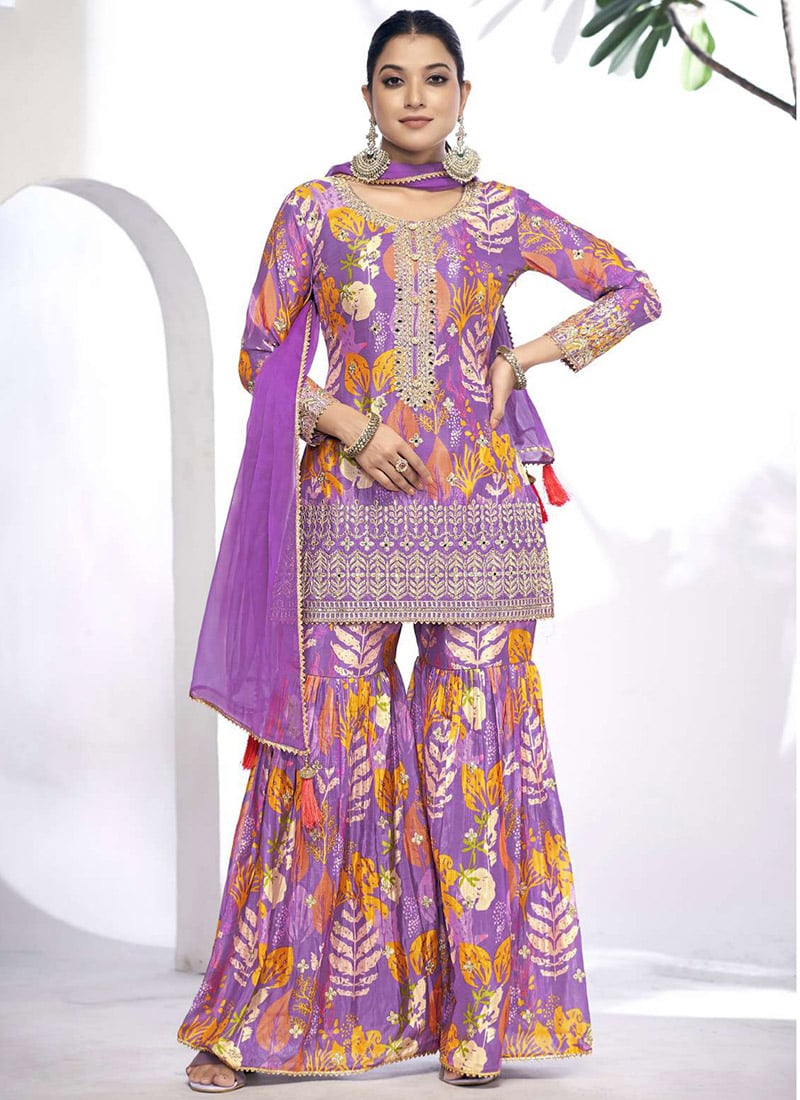
Cbazaar is the go-to shop for this reason. You can find ready-made sharara and gharara sets that feel like they have been tailor-made for you. With seamless and prompt delivery service, Cbazaar stands out to offer you the best of the best shararas and gharas that stand unique with the test of time.
Sharara vs Gharara Faqs
- Which is more comfortable: Sharara or Gharara?
Shararas are a little more comfortable than gharara because of their flowy, lightweight design. But if you want your gharara to be more comfortable, reduce the flare.
- Can I wear heels with a Sharara or Gharara?
Yes, both sharara and gharara have a lot of flare and go down to your ankle. Not only do heels suit the two attires, but they essentially keep you from tripping.
- Can I wear a Sharara or Gharara for casual occasions?
You can pair both gharara and sharara with a crop top or short kurti for casual occasions. It’s better if the fabric is made of cotton and you have sandals on instead of heels.
- Can you wear a sharara suit to a wedding?
You can wear a sharara suit to a wedding, especially if it’s a heavily embroidered one




Leave a Reply